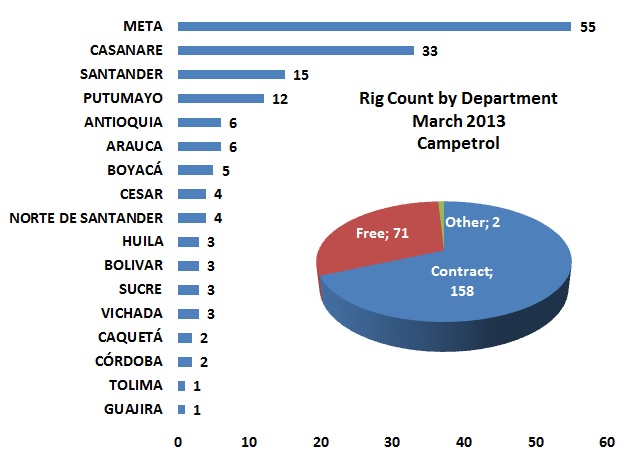Last week the USO was picking on Pacific Rubiales and this week the focus was Ecopetrol. The first item highlights a problem we have heard in other contexts: that Ecopetrol has been extending times for paying contractors. In the particular case here, the contractor decided not to pay their workers and the USO questions why they got the contract if they did not have sufficient liquidity to deal with Ecopetrol’s payment terms
Counts were down to 30 which is 20% below recent and long term averages. Our 4-week Moving Average incident count was down 8% to 33.6 incidents but the 52 week average held steady at 36.6.
The Comptroller General (like an Auditor General) says that MinMinas, Ecopetrol and the National Hydrocarbons Agency (ANH) should be monitoring Pacific Rubiales production processes in fields that will eventually revert to Ecopetrol. The report contends that practices designed to optimize short-term extraction could damage the deposits to such an extent that future production will be adversely affected. From a Controlaria press release, translated and with commentary by Hydrocarbons Colombia.
The overall framework of the peace talks in civil society – beyond the negotiating table – is becoming a debate between rendition and reconciliation. A sizable and vocal portion of Colombian society wants rendition: no peace unless the Farc surrender and pay for their crimes. A statistical majority appear to be tired of the long conflict and simply want peace. The latter group would share the former’s concerns about the future – no deals with the Farc that would cause fundamental shifts in Colombian society — but are less concerned about atonement for the past. They just want the conflict to end.

Service company association Campetrol’s rig counts are up between this survey which is just labeled ‘March, 2013’ and the last figures which were labeled ‘February 13th, 2013’. There are three more under contract and 1 more ‘Free’. That is a positive sign although we are coming into the first half ‘winter’ season when drill rig movements slow down considerably.
Meta governor Alan Jara has been particularly critical of the new royalty system and for understandable reasons: as the largest producer department he had the most to lose from a centralized distribution system. Here MinMinas tries to show what Meta has received and also to show Jara’s personal involvement in the process. From a MinMinas press release, translated and with commentary by Hydrocarbons Colombia.